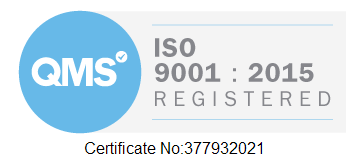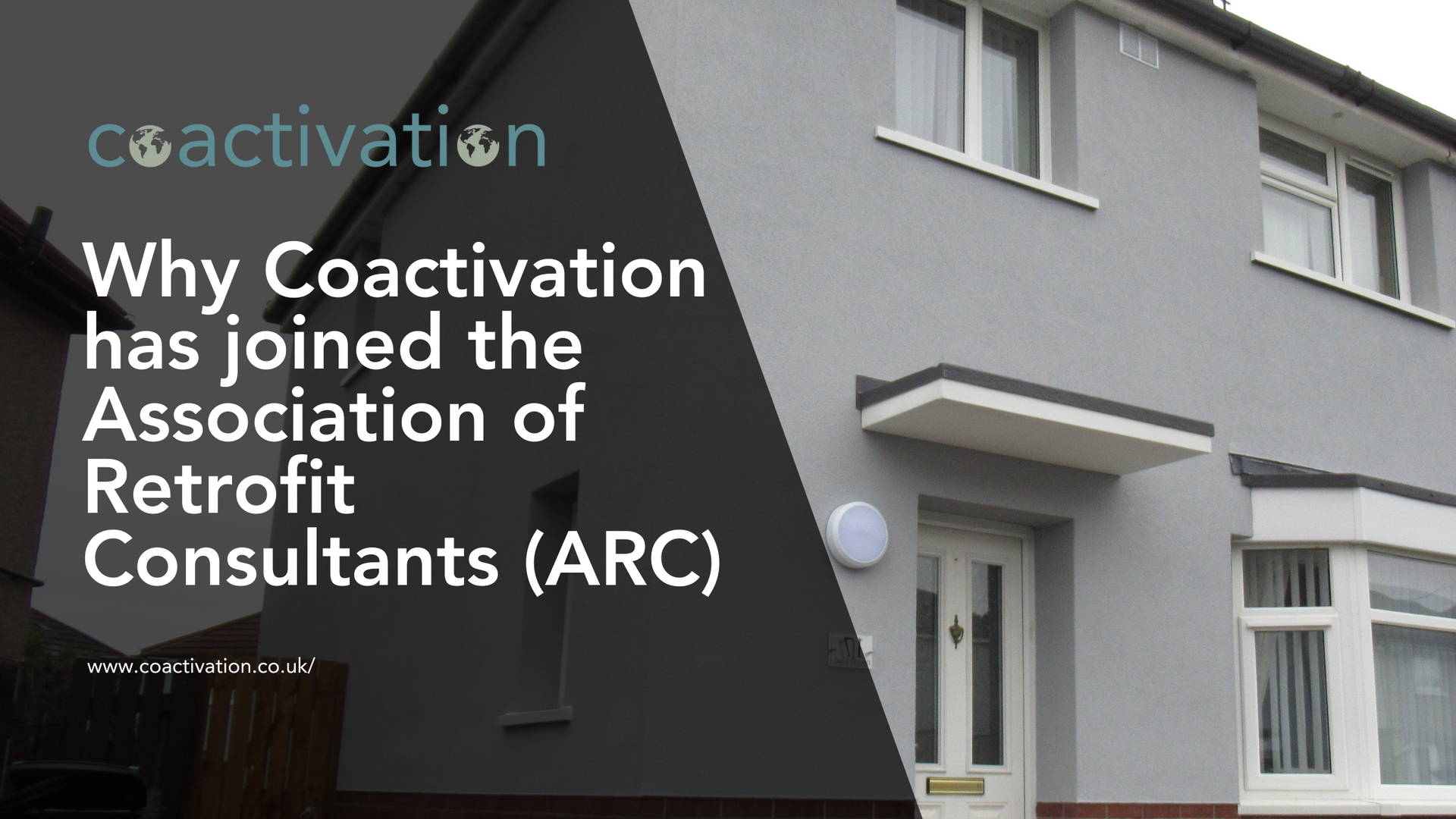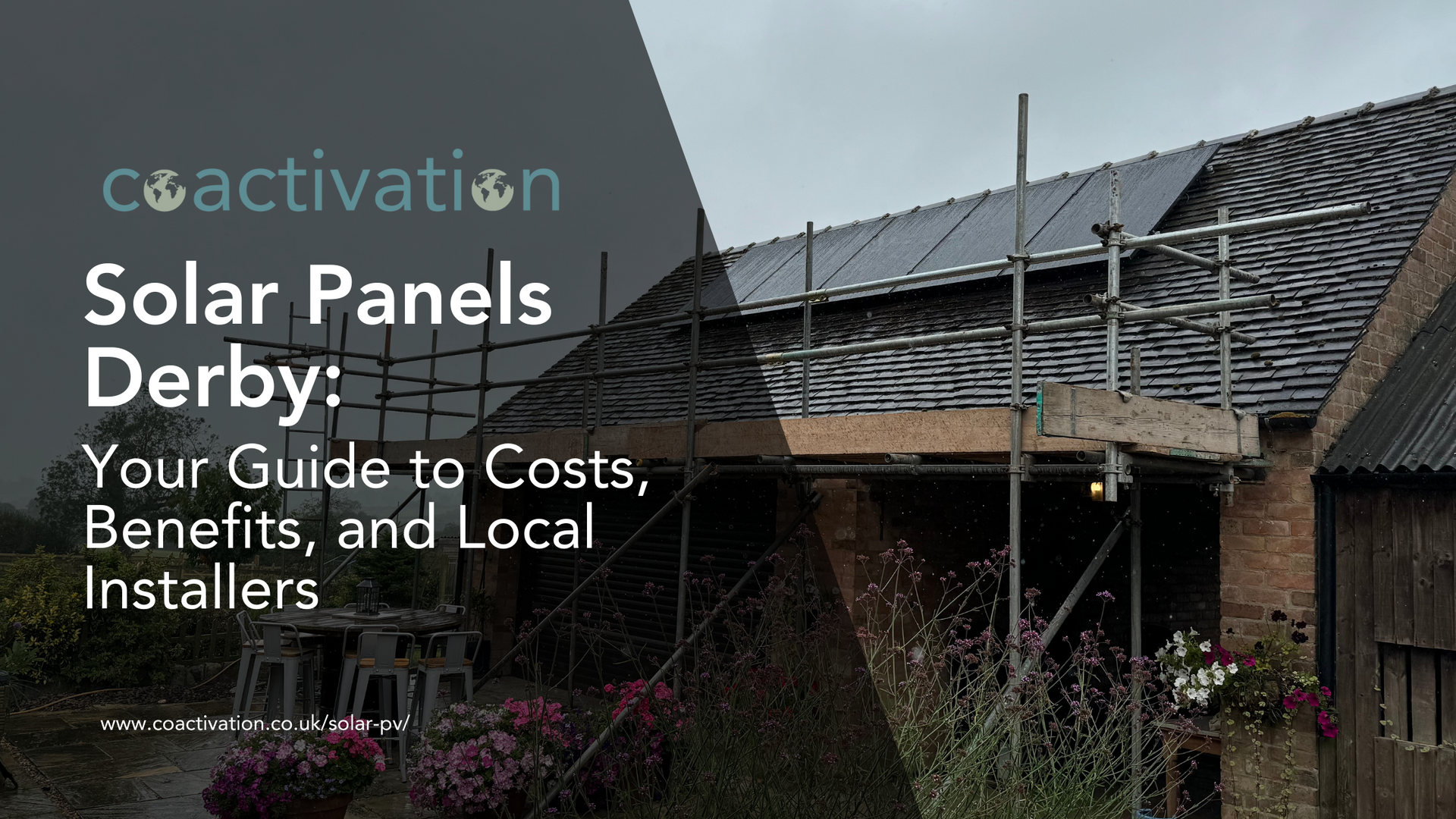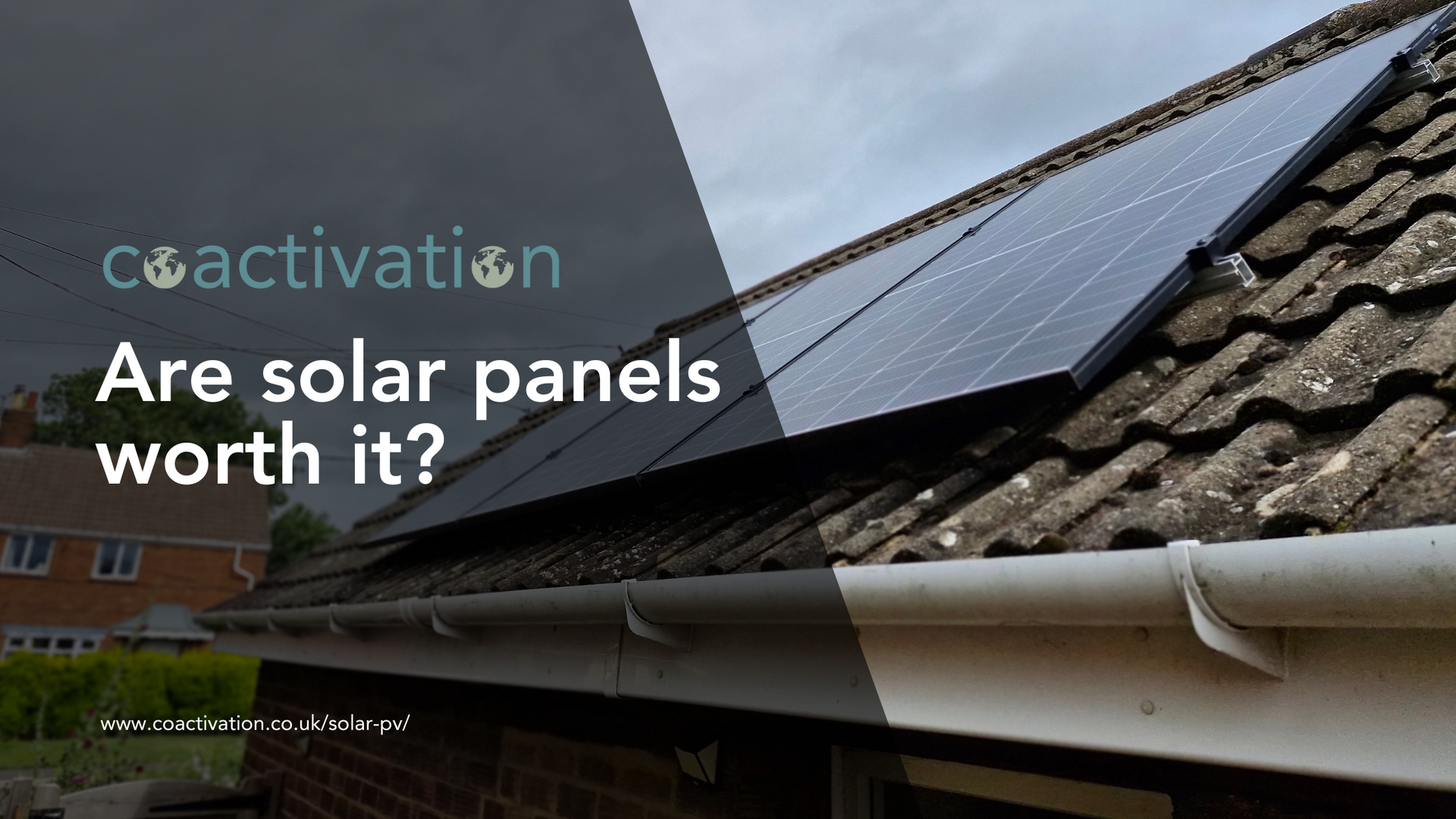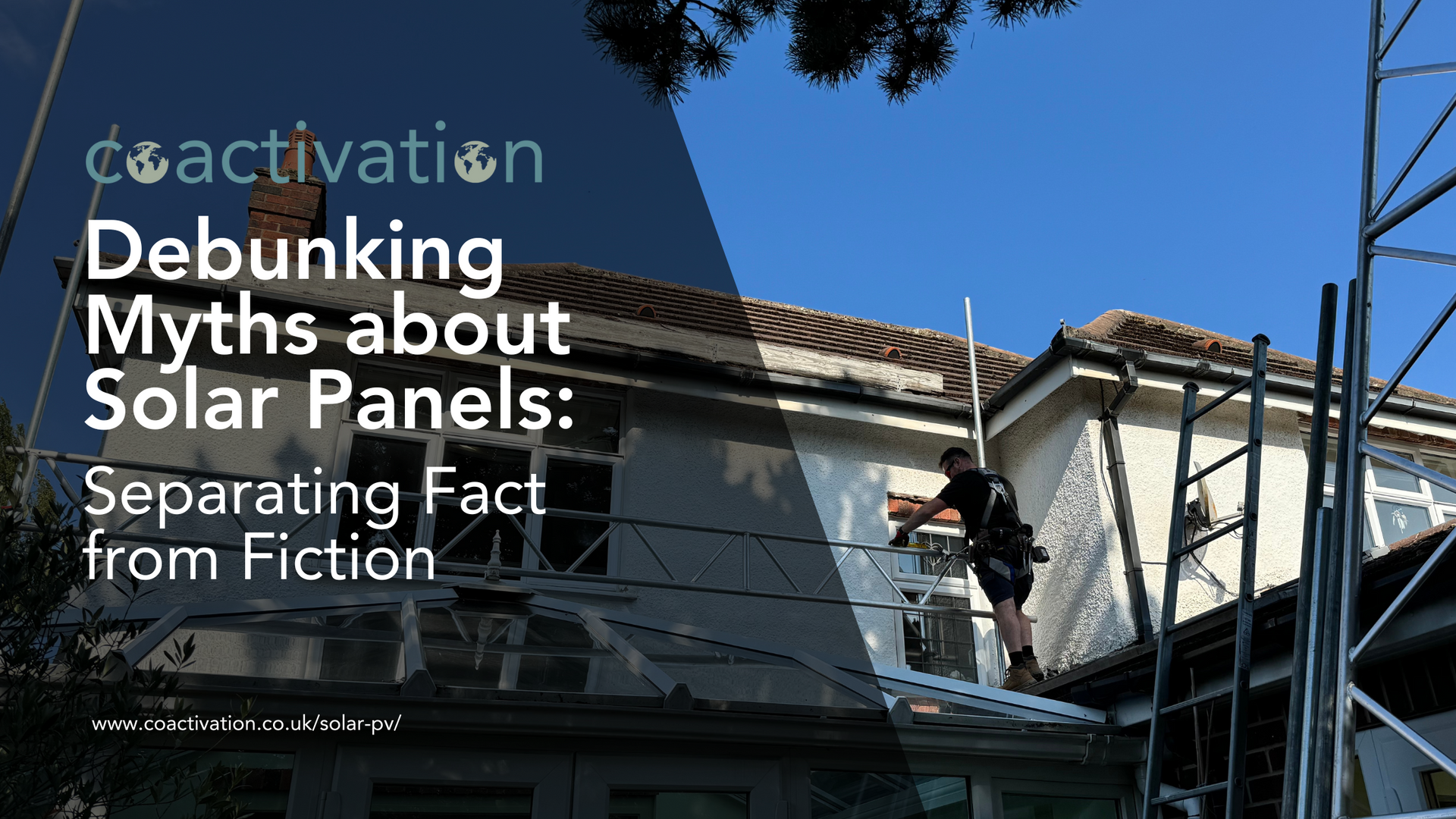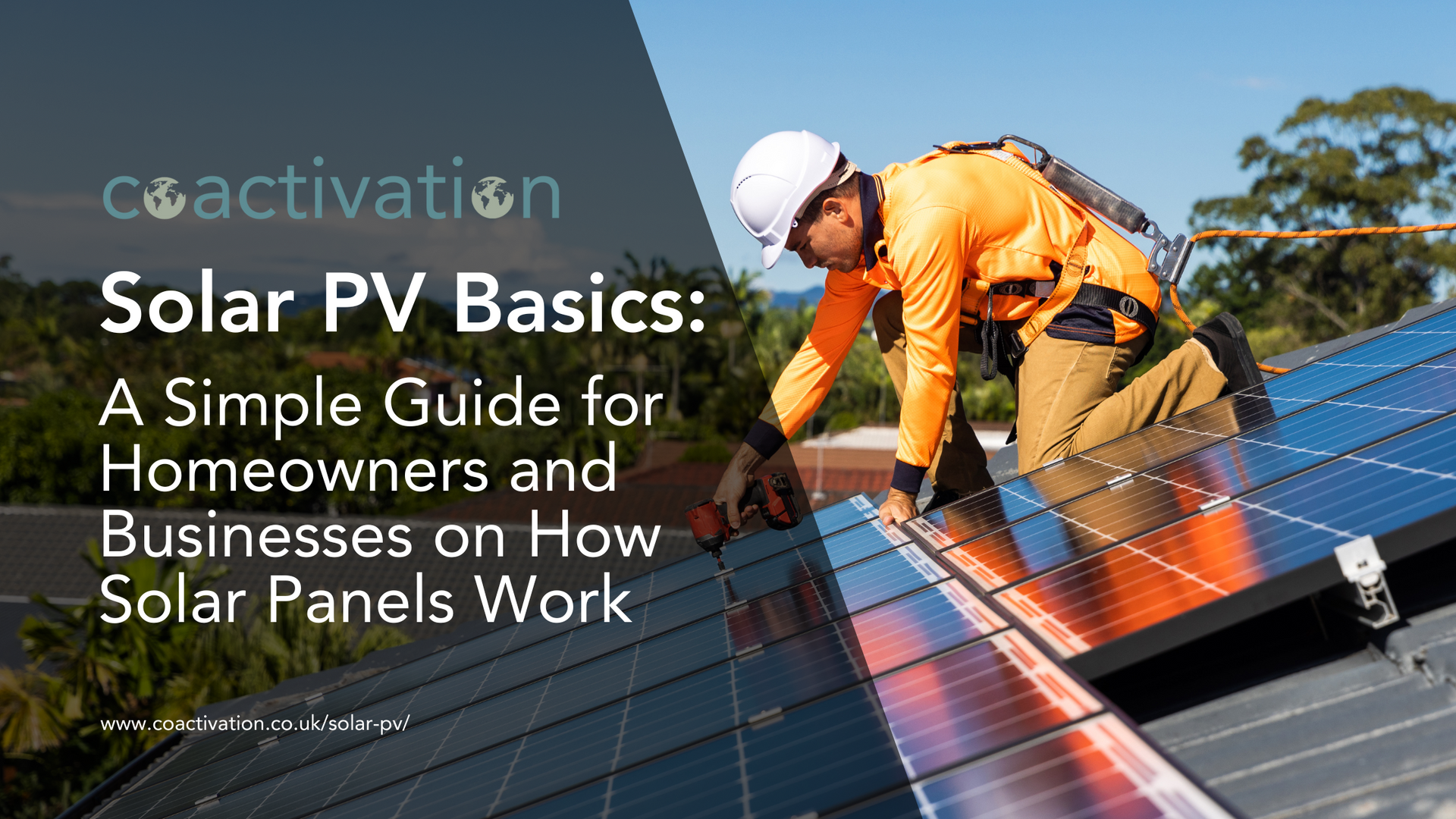
Solar PV Basics UK: A Simple Guide for Homeowners and Businesses on How Solar Panels Work
Contents
- What Are Solar Panels and How Do They Work?
- Types of Solar Panels: Which One is Right for You?
- Is Solar PV Suitable for My Home or Business?
- The Benefits of Solar PV Systems: Why Go Renewable Energy?
- How Do Solar Panels Perform in the UK’s Climate?
- Installation Process: What to Expect When Going Solar
- Components of a Solar PV System
- Solar PV System Cost and Savings: What You Need to Know
- Maximising Energy Output: Tips for Optimal Performance
- Energy Storage and Backup Power: Ensuring Reliability
- Summary
Solar energy and solar power systems are no longer just futuristic ideas; they’re here, transforming how homes and businesses power their everyday lives. But how do solar panels actually work? Whether you’re a homeowner looking to reduce energy bills or a business owner exploring sustainable options, understanding the basics of Solar PV systems, can help you make an informed decision. This guide breaks down the essentials of solar panels in plain, simple language—no technical jargon, just straightforward answers to the questions you care about.

What Are Solar Panels and How Do They Work?
Solar panels are at the heart of solar energy systems, turning sunlight into usable electricity for homes and businesses. But how do they actually work? It’s simpler than you might think, and understanding the basics can help you make an informed decision about whether solar is right for you.
How Solar Panels Generate Electricity
Any modern, efficient renewable energy source, such as a solar photovoltaic system, includes a range of technology to transform the sun’s energy into an electric current, contributing to solar power generation and helping create an energy-efficient home.
- Photovoltaic Cells: The magic happens in the photovoltaic (PV) cells made of silicon, a material that absorbs sunlight. When sunlight hits these cells, it knocks electrons loose, creating an electric current. This is known as the photovoltaic effect.
- From DC to AC Electricity: The electricity generated by the panels is direct current (DC), but our homes and businesses use alternating current (AC). That’s where the inverter comes in—it converts DC into AC, making the electricity usable for everyday appliances and equipment.
- Grid Connection and Battery Storage: If your solar panels generate more solar generated electricity than you use, the excess can be fed back into the grid, often earning you money through schemes like the Smart Export Guarantee (SEG). Alternatively, you can store excess energy in batteries for use when the sun isn’t shining, like in the evening or on cloudy days.
Why This Matters
Understanding the basics of how solar panels work means that you get to take control of your solar energy production, reduce your carbon footprint, and save money on your bills. With technology that’s reliable even in the UK’s often cloudy climate, solar panels are a practical choice for anyone looking to embrace renewable energy.

Types of Solar Panels: Which One is Right for You?
Choosing the right type of solar panel is crucial to ensuring your solar technology meets your needs. Solar photovoltaic panels are a key component in harnessing renewable energy from the sun to generate electricity for homes, contributing to cost savings and environmental benefits. There are three main types: Monocrystalline, Polycrystalline, and Thin-Film panels, each with unique features and benefits that suit different applications.
Monocrystalline Panels: The Premium Choice
Monocrystalline panels are made from a single, pure silicon crystal, which gives them a sleek, uniform black appearance. They are known for their high efficiency and durability, making them a popular choice for both homes and businesses. These panels are well-suited to properties with limited roof space because they can produce more electricity per square metre. While they come at a higher initial cost, their long lifespan often makes them a worthwhile investment for those prioritising efficiency and aesthetics.
Polycrystalline Panels: The Budget-Friendly Option
Polycrystalline panels are made from multiple silicon crystals melted together, resulting in a speckled blue appearance. Although they are slightly less efficient compared to monocrystalline panels, they are generally more affordable, making them ideal for larger installations where space is not a constraint. Polycrystalline panels offer a good balance between cost and performance, providing a practical choice for those who want to save on upfront costs without significantly compromising on efficiency.
Thin-Film Panels: The Flexible Specialist
Thin-film panels are lightweight and flexible, constructed by layering photovoltaic materials onto surfaces like glass or plastic. Although they are the least efficient of the three types, their flexibility and adaptability make them suitable for specialised uses, such as curved surfaces, portable solar setups, or unconventional installations where standard panels may not fit. Thin-film panels are an excellent option when aesthetics and adaptability are more critical than high efficiency.

Is Solar PV Suitable for My Home or Business?
Before installing a solar PV system, it’s essential to assess your property’s potential for solar energy generation. Here are some factors to consider:
- Roof Orientation and Size: A south-facing roof with minimal shading is ideal for solar PV panels. The size of your roof will also impact the number of solar PV panels you can install. A larger roof can accommodate more panels, increasing your potential for energy generation.
- Shading: Shading from trees, buildings, or other obstructions can significantly impact the performance of your solar PV system. Consider trimming trees or removing obstructions to minimize shading. Even partial shading can reduce the efficiency of your panels, so it’s crucial to ensure they receive as much sunlight as possible.
- Local Building Regulations: Check with your local authorities to ensure that your solar PV system complies with all building regulations and zoning laws. Some areas may have specific requirements or restrictions that you need to be aware of before installation.
- Energy Usage Patterns: Assess your energy usage patterns to determine the size of the solar PV system you need. Consider your energy usage during the day, as well as your energy storage needs. Understanding your consumption habits will help you design a system that meets your energy demands effectively.
- Budget and Financing Options: Determine your budget for the solar PV system and explore financing options, such as loans or grants, to help cover the upfront costs. Investing in solar energy can be a significant financial commitment, but various incentives and financing options can make it more affordable.
By considering these factors, you can determine whether a solar PV system is suitable for your home or business and ensure that you get the most out of your investment in renewable energy. Solar energy offers a practical, sustainable, and increasingly affordable way to power your property, making it a smart choice for those looking to reduce energy bills and embrace renewable energy.

The Benefits of Solar PV Systems: Why Go Renewable Energy?
Solar PV systems are more than just a way to generate electricity; they’re an investment in a sustainable, cost-effective, and independent future. Whether you’re a homeowner or a business owner, going solar offers numerous benefits that make it a smart choice, particularly in the UK’s evolving energy landscape.
Cost Savings
One of the most compelling reasons to go solar is the significant solar energy savings on your energy bills, thanks to solar PV panels. By generating your own electricity, you reduce your dependence on the grid and cut down on monthly energy costs. Additionally, any excess electricity your system generates can be sold back to the grid through schemes like the Smart Export Guarantee (SEG), providing an extra income stream. Over time, these savings can make a substantial difference, helping you recoup your initial investment and achieve long-term financial benefits.
Environmental Impact
Solar energy is a clean, renewable resource that plays a crucial role in reducing carbon emissions, highlighting the solar power benefits. Unlike fossil fuels, solar power doesn’t release harmful pollutants into the atmosphere, making it a key component of a sustainable future. By switching to solar, you contribute to the global effort to combat climate change, helping to reduce your carbon footprint and promote greener energy solutions. This environmental impact is not just a benefit for the planet but also aligns your home or business with eco-friendly values that resonate with today’s socially conscious consumers.
Energy Independence
Installing solar panels empowers you to take control of your energy production and reduce your reliance on traditional energy suppliers, offering effective solar energy solutions. This independence not only protects you from rising energy costs but also ensures a more stable and predictable energy source for your home or business. With the growing availability of solar battery storage options, you can store excess energy generated during sunny periods and use it when needed, further enhancing your energy security and resilience against future price hikes or energy supply disruptions.
Why This Matters
The benefits of solar PV systems extend far beyond financial savings. By investing in solar, you are making a commitment to a more sustainable, independent, and environmentally friendly future. Whether you’re looking to reduce costs, lower your carbon footprint, or gain energy autonomy, solar power provides a clear path forward that aligns with both personal and global goals.
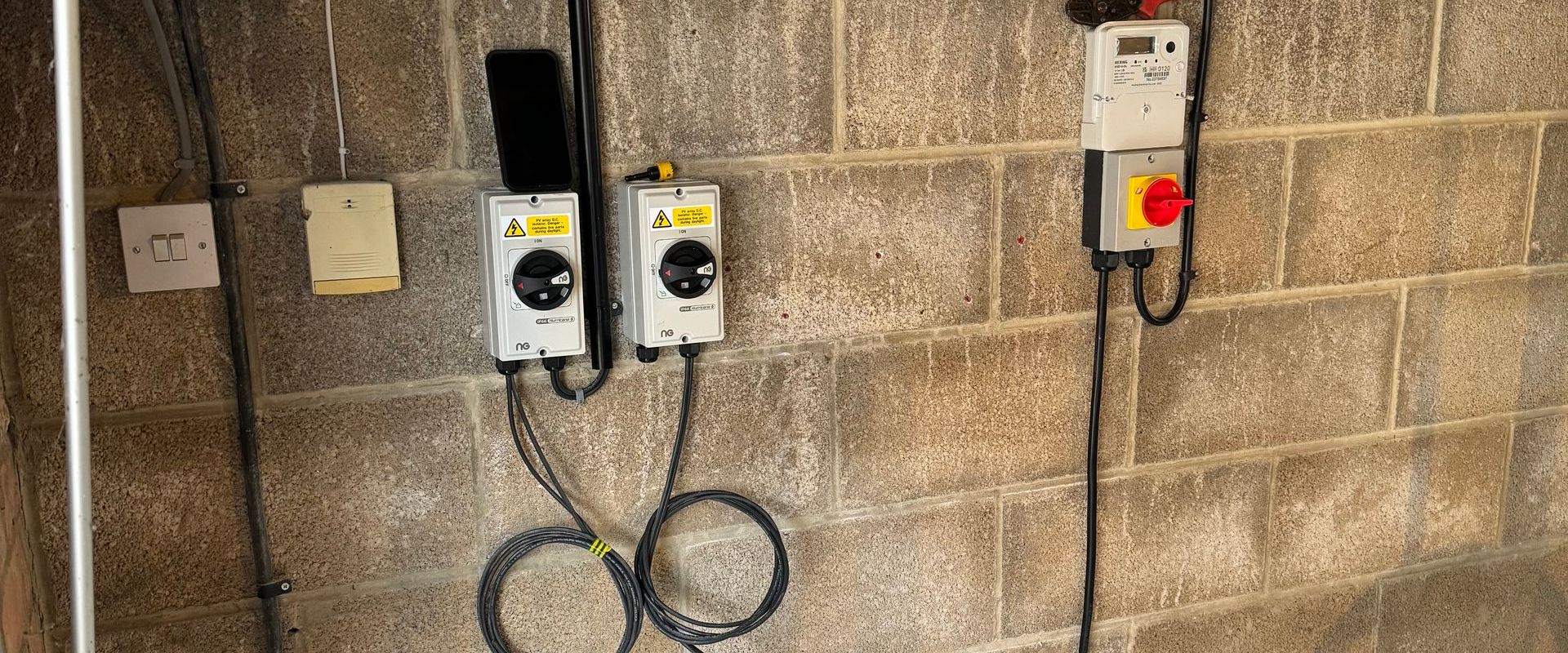
How Do Solar Panels Perform in the UK’s Climate?
One of the most common questions for UK homeowners and businesses considering solar is whether solar panels are effective in the UK’s famously variable weather. While the UK might not enjoy the year-round sunshine of sunnier climates, solar panels are surprisingly well-suited to the UK’s conditions, and here's why.
Solar Panels and Cloudy Weather
It’s a common misconception that solar panels only work well in direct sunlight. While it’s true that solar panels generate the most electricity when the sun is shining, they still function effectively on cloudy days, maintaining solar energy efficiency. Solar panels are designed to capture various wavelengths of light, including those that penetrate through clouds. This means that even on overcast days, your panels can still generate electricity, albeit at a reduced rate compared to sunny conditions.
Performance in Cooler Temperatures
Interestingly, solar panels perform better in cooler temperatures, which is good news for the UK. High temperatures can reduce the efficiency of solar cells, meaning that the UK’s mild climate actually helps panels operate at optimal efficiency. This characteristic ensures that solar systems in the UK can consistently generate power throughout the year, despite the lack of intense, direct sunlight.
Year-Round Energy Generation
Despite the variability in weather, UK-based solar PV systems can generate a significant amount of electricity across all seasons. During the longer, sunnier days of spring and summer, panels can produce excess energy, which can be stored in solar batteries or fed back to the grid through schemes like the Smart Export Guarantee (SEG). In the autumn and winter months, while production naturally decreases due to shorter daylight hours, the panels continue to contribute to overall energy savings, making them a viable year-round investment.
Why This Matters
The UK’s climate may not always be tropical, but solar panels are still a practical and efficient choice for generating clean, renewable energy. By understanding how panels work in different weather conditions, you can make a more informed decision about investing in solar power for your home or business.

Installation Process: What to Expect When Going Solar
Deciding to install solar panels is an exciting step towards energy independence and sustainability. Understanding the installation process can help set clear expectations and make the journey smoother. Here’s a step-by-step look at what you can expect when you go solar.
Step 1: Consultation and Site Assessment
The first step in the solar installation process involves a consultation with a solar provider who will assess your property to determine the suitability for solar panels. During this assessment, factors such as roof orientation, shading, and available space are evaluated. Your energy needs and goals will also be discussed, allowing the installer to recommend the best solar solution tailored to your specific requirements.
Step 2: System Design and Quotation
Once the assessment is complete, the solar provider will design a customised solar PV system that maximises efficiency and meets your needs. You will receive a detailed quotation outlining the costs, potential energy savings, and expected payback period. This quote will also include information on any available incentives, such as the Smart Export Guarantee (SEG), which allows you to earn money by exporting excess electricity back to the grid.
Step 3: Installation
The actual installation of the solar panels is a straightforward process that usually takes one to two days, depending on the size and complexity of the system. The installation team will fit the panels on your roof, connect the inverter (which converts the solar energy into usable electricity), and integrate the system with your existing electrical setup. Professional installers ensure that the panels are securely mounted and optimally positioned to capture the most sunlight.
Step 4: System Testing, Commissioning, and Remote Monitoring
After installation, the system will be thoroughly tested to ensure everything is working correctly. The installer will demonstrate how to monitor your system’s performance and explain any maintenance requirements. Most modern solar PV systems come with the ability to monitor and control your solar production remotely via smartphone apps. These apps provide real-time data on energy generation, consumption, and system efficiency, making it easy to track your solar performance from anywhere.
Step 5: Post-Installation Support and Monitoring
Once your system is up and running, ongoing support is typically available to help you get the most out of your solar PV installation. Many providers offer monitoring services through the smartphone apps, allowing you to track your system’s performance in real-time. This support ensures that you can maintain optimal energy generation and swiftly address any issues that may arise.

Components of a Solar PV System
A solar PV system consists of several key components that work together to generate electricity from sunlight. Understanding these components is essential to appreciate how a solar PV system works and to ensure that your system is installed and maintained correctly.
- Solar PV Panels: These are the most visible part of a solar PV system, and they are responsible for converting sunlight into electricity. Solar PV panels are made up of many small photovoltaic cells, which are made from semiconducting materials like silicon. When sunlight hits these cells, it creates an electric current, generating DC electricity.
- Mounting System: The mounting system is used to secure the solar PV panels to your roof or ground. It must be sturdy enough to withstand various weather conditions, including wind, rain, and snow. Proper mounting ensures that your panels are optimally positioned to capture the most sunlight.
- Inverter: The inverter is a crucial component of a solar PV system, as it converts the DC electricity generated by the solar PV panels into AC electricity, which is usable in your home or business. Without an inverter, the energy generated by your panels would not be compatible with your electrical appliances.
- Charge Controller: A charge controller is used to regulate the flow of energy from the solar PV panels to the battery bank, preventing overcharging and damage to the batteries. This component is essential for maintaining the health and longevity of your battery storage system.
- Battery Bank: A battery bank is used to store excess energy generated by the solar PV system during the day, allowing you to use it at night or during power outages. This ensures a continuous power supply and maximises the use of the energy generated by your solar panels.
- Monitoring System: A monitoring system is used to track the performance of your solar PV system, providing you with real-time data on energy generated, energy used, and any issues that may arise. Monitoring helps you ensure that your system is operating efficiently and allows you to address any problems promptly.

Solar PV System Cost and Savings: What You Need to Know
The cost of a solar PV system can vary depending on several factors, including the size of the system, the type of equipment used, and the installation company. However, with the cost of solar panels decreasing over the years, solar PV systems have become more affordable and accessible to homeowners and businesses.
Initial Investment
The upfront cost of a solar PV system includes the price of the solar panels, inverters, mounting systems, and installation labour, collectively referred to as solar panel costs. While this initial investment can be significant, it’s important to consider the long-term savings and benefits.
Government Incentives
Various government incentives and schemes, such as the Smart Export Guarantee (SEG), can help offset the initial costs. These programs allow you to earn money by exporting excess electricity generated by your solar panels back to the grid.
Energy Savings
One of the most significant benefits of installing a solar PV system is the reduction in electricity bills. By generating your own solar electricity, you decrease your reliance on the grid, leading to substantial savings over time. The exact amount saved will depend on your energy consumption and the size of your solar PV system.
Return on Investment (ROI)
The ROI for a solar PV system can be quite attractive. Many homeowners and businesses find that their systems pay for themselves within a few years through energy savings and incentives. After the payback period, the electricity generated by the system is essentially free, providing ongoing financial benefits.
Why This Matters
Understanding the costs and potential savings associated with a solar PV system can help you make a well-informed decision. With decreasing costs and increasing incentives, solar panels are a smart investment for those looking to reduce energy bills and embrace renewable energy.
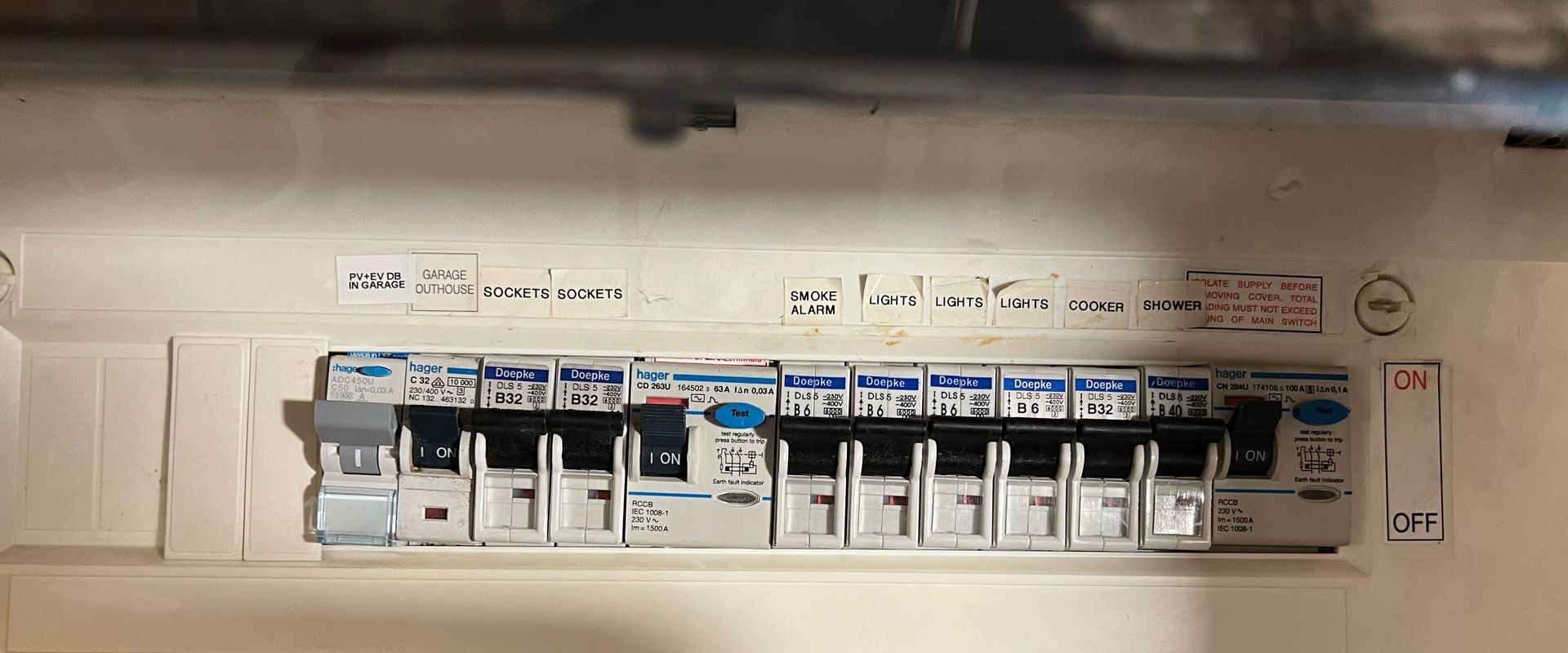
Maximising Energy Output: Tips for Optimal Performance
To maximise solar energy performance from your solar PV system, follow these tips:
Optimal Placement
Ensure that your solar panels are installed in a location that receives maximum sunlight throughout the day. Avoid areas with shading from trees, buildings, or other obstructions.
Regular Maintenance
Keep your solar panels clean and free from debris. Regular maintenance checks can help identify and address any issues that may affect performance, such as dirt buildup or damaged panels.
Monitor Performance
Use a monitoring system to track the performance of your solar PV system. Monitoring allows you to identify any drops in energy production and take corrective action promptly.
Upgrade Components
As technology advances, consider upgrading components like inverters or adding battery storage to enhance the efficiency and reliability of your system.
Energy Efficiency
Complement your solar PV system with energy-efficient appliances and practices. Reducing overall energy consumption can help you make the most of the electricity generated by your panels.
Why This Matters
By following these tips, you can ensure that your solar PV system operates at peak efficiency, maximizing the energy generated and the financial benefits you receive.

Energy Storage and Backup Power: Ensuring Reliability
Energy storage and backup power are essential components of a solar PV system, ensuring that you have a reliable source of energy during periods of low sunlight or at night.
Battery Storage
Modern solar battery storage systems allow you to store excess energy generated by your solar panels for later use. This stored energy can be used during the evening or on cloudy days, providing a continuous power supply and reducing reliance on the grid.
Energy Management Systems
Advanced energy management systems can optimize the use of stored energy, ensuring that your home or business remains powered efficiently. These systems can automatically switch between solar, battery, and grid power based on availability and demand.
Why This Matters
Energy storage and backup power solutions enhance the reliability and resilience of your solar PV system. By ensuring a steady power supply, you can enjoy the benefits of solar energy even during periods of low sunlight, making your investment in renewable energy more robust and dependable.

Installation Process: What to Expect When Going Solar
Deciding to install solar panels is an exciting step towards energy independence and sustainability. Understanding the installation process can help set clear expectations and make the journey smoother. Here’s a step-by-step look at what you can expect when you go solar.
Step 1: Consultation and Site Assessment
The first step involves a consultation with a solar provider who will assess your property to determine the suitability for solar panels. During this assessment, factors such as roof orientation, shading, and available space are evaluated. Your energy needs and goals will also be discussed, allowing the installer to recommend the best solar solution tailored to your specific requirements.
Step 2: System Design and Quotation
Once the assessment is complete, the solar provider will design a customised solar PV system that maximises efficiency and meets your needs. You will receive a detailed quotation outlining the costs, potential energy savings, and expected payback period. This quote will also include information on any available incentives, such as the Smart Export Guarantee (SEG), which allows you to earn money by exporting excess electricity back to the grid.
Step 3: Installation
The actual installation of the solar panels is a straightforward process that usually takes one to two days, depending on the size and complexity of the system. The installation team will fit the panels on your roof, connect the inverter (which converts the solar energy into usable electricity), and integrate the system with your existing electrical setup. Professional installers ensure that the panels are securely mounted and optimally positioned to capture the most sunlight.
Step 4: System Testing and Commissioning
After installation, the system will be thoroughly tested to ensure everything is working correctly. The installer will demonstrate how to monitor your system’s performance and explain any maintenance requirements. They will also handle the registration of your system with your Distribution Network Operator (DNO), which connects your system to the grid and, if applicable, sets you up for earning through the SEG.
Step 5: Post-Installation Support and Monitoring
Once your system is up and running, ongoing support is typically available to help you get the most out of your solar PV installation. Many providers offer monitoring services that allow you to track your system’s performance in real-time. This support ensures that you can maintain optimal energy generation and swiftly address any issues that may arise.

Summary
Solar energy offers a practical, sustainable, and increasingly affordable way to power your home or business. By understanding how Solar PV works, the types of panels available, and what to expect during installation, you can make an informed decision that suits your needs and values.
Ready to explore your options? Get in touch for a free consultation today and start your journey to energy independence.
